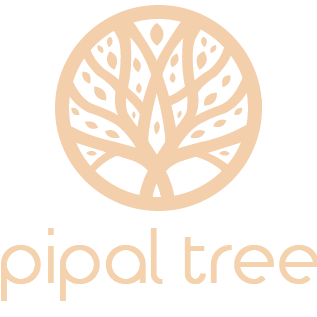In my years working in talent acquisition, one lesson is crystal clear : structured interviews aren’t just “nice to have” – they’re essential for fairness, rigor, and consistency.
Free-wheeling conversations may feel more human, but they open the door to confirmation bias, where interviewers unconsciously look for evidence that supports their initial impressions, rather than objectively assessing whether the candidate truly meets the criteria.
Over time, this can lead to hiring leaders who are more likeable than capable, at great cost to organizational performance.
What is confirmation bias in hiring?
Confirmation bias is the tendency to seek, interpret, or recall information in a way that confirms one’s preexisting beliefs or hypotheses. In interview settings, this can manifest as:
Favoring candidates whose background or style reminds the interviewer of themselves or someone they already trust (affinity bias).
Steering the conversation toward topics that confirm existing impressions, “What else have you done like X?” rather than probing objectively.
Overlooking or downplaying red flags because they don’t align with the interviewer’s initial “gut feeling.”
Giving more weight to positive signals (credentials, demeanor) while discounting weaknesses.
Because interviews are high-stakes, ambiguous, and emotionally charged, the risk of confirmation bias is high.
What Is a Structured Interview?
A structured interview is a standardized process in which every candidate for a given role is asked the same set of questions, in the same order, and evaluated against a consistent scoring framework.
Unlike informal interviews, structured interviews are carefully designed around the skills, qualities, and competencies required for success in the role. This approach ensures that hiring decisions are rooted in evidence rather than instinct—helping companies select leaders who are truly qualified and aligned with organizational needs.
The Pipal Tree Guide to Structured Interviews
Advantages of Structured Interviews
- Objectivity & Reduced Bias – Because all candidates answer the same questions and are scored using the same rubric, interviewer bias (confirmation, halo, contrast effects) is minimized.
- Predictive Validity & Better Hires – Structured interviews are more reliable predictors of future job performance compared to unstructured interviews.
- Consistency & Fairness – Every candidate is evaluated on the same dimensions, eliminating variability introduced by ad hoc questioning. This consistency strengthens fairness and legal defensibility.
- Improved Candidate Experience – Candidates often appreciate the transparency and perceived fairness of structured formats. In controlled studies, rejected candidates reported higher satisfaction when interviewed in a structured format.
- Efficiency & Scalability – Once structured question sets are built, interviewers don’t have to “make up” questions on the fly. Decision-making is faster, more systematic, and easier to calibrate across multiple interviewers.
- Legal & Compliance Strength – In litigation or regulatory review, using consistent, job-related questions helps defend against claims of discrimination or unfair hiring practices.
"At Pipal Tree, we’ve often worked with clients who came to us after realizing that unstructured interviews had led to bias, missed potential, and, in some cases, the wrong leadership choices. By introducing structured interviews, we’ve helped them bring fairness, consistency, and clarity into the process. More importantly, this approach has enabled us to uncover leaders whose personal mission aligns with the organization’s purpose—creating leadership decisions that are not just right for today, but transformative for the future."
Rahul Bahuguna, Director Tweet
So why don’t more organizations use structured interview questions?
Upfront Effort – Developing rigorous, role-specific questions and scoring rubrics takes time and thought.
Interviewer Discipline – Interviewers must resist deviating from the script or allowing improvisation to reintroduce bias.
Overly Rigid – Too much rigidity can stifle the natural flow of conversation or miss nuance, often a hybrid or semi-structured model is useful.
Calibration Needs – Interviewers must be trained and periodically calibrated to interpret responses consistently.
Updating Over Time – Question sets and role competency definitions must evolve as the role or market changes.
Despite the challenges, the long-term gains in hire quality, fairness, and trust far outweigh the effort.
How do one actually do it ?
Below is a simplified, illustrative interview framework that Pipal Tree might deploy when hiring a CEO for a SaaS (Software-as-a-Service) company. You can adapt it based on your client’s stage, size, product maturity, and strategic priorities.
Step 1 : Role & Competency Definition
Before writing any interview questions, it’s essential to create alignment within your hiring team about what success in the role actually looks like.
This means clearly defining the competencies, behaviors, and outcomes you expect from the new hire. Without this shared understanding, even the most well-designed questions risk producing inconsistent or biased evaluations.
So for a CEO of a SaaS company, some of the competency to be evaluated would be
- Vision & Strategic Thinking
- Execution & Scaling Capabilities
- Product & Technology Acumen
- Customer-First Orientation
- Financial & Operational Discipline
- Talent Leadership & Culture Building
Change & Growth Mindset
Stakeholder & Board Management
From these competencies, Pipal Tree would derive behavioral, situational, and technical questions, anchored scoring rubrics, and interviewer guidelines.
Step 2 : Interview Structure & Flow
Based on the framework of the competencies identified, as the next step create a bank of behavioral, situational, and technical questions.
| Stage | Focus Areas | Sample Questions | Scoring Dimensions | Interviewers |
|---|---|---|---|---|
| Pre-Screen / Qualifier | High-level alignment, background | “Walk me through your SaaS leadership journey and product-led growth successes.” | Role fit, strategic narrative | Senior consultant |
| Behavioral Deep Dive | Evidence of past actions | “Tell me about a time when you scaled a SaaS business from $5M to $50M ARR. What were the major levers you pulled?” | Execution, scale, prioritization | Two panelists |
| Situational / Scenario | Future challenges | “If churn unexpectedly spiked by 15%, what diagnostic steps would you take? What short-term measures would you prioritize?” | Problem-solving, customer focus | Panel |
| Leadership & Culture | Team & people practices | “Describe a time when you had to change culture in your organization. How did you lead that change?” | Talent orientation, influence, resilience | Panel |
| Technical / Product | Product vision & tech alignment | “How would you evaluate our product roadmap? Which features would you deprioritize or accelerate in the next 12 months, and why?” | Product judgment, technical fluency | CTO + panel |
| Board / Stakeholder | External facing role | “How would you manage tension between founder vision, investor expectations, and customer needs?” | Governance, communication, alignment | Board representative + CEO |
Step 3 : Scoring Rubric (Anchor Example)
For each question, interviewers can use an anchored 1–5 scale with behaviorally defined benchmarks. For example:
| Score | Description | Indicators |
|---|---|---|
| 5 – Outstanding | Exemplifies best-in-class leadership | Concrete metrics (e.g. 3× growth in <2 yrs), clear narrative, team impact, scaling story |
| 4 – Strong | Meets most high expectations, few gaps | Good examples, measurable results, some stretch |
| 3 – Solid / Satisfactory | Meets core expectations | Reasonable examples, moderate impact, some gaps |
| 2 – Weak | Lots of good intentions but weak execution | Vague answers, lack of metrics, insufficient depth |
| 1 – Poor | Does not meet role expectations | Unable to provide relevant examples, no clear rationale or logic |
Each interviewer submits their numeric scores along with qualitative notes (strengths, risk areas, clarifying questions).
Step 4. Interviewer Calibration & Final Decision
Before interviews begin, it is important to calibrate among all interviewers, this includes discussing sample answers, agreeing on scoring benchmarks, and aligning on what “good” looks like for each competency.
Once the interviews are completed, the next step is to aggregate both numeric scores and qualitative feedback to get a complete view of each candidate’s performance.
A consensus meeting should then be held to resolve any discrepancies, explore divergent ratings, and reach a decision that is grounded in both data and narrative alignment.
Finally, organizations may choose to follow up with reference checks, focused on the same set of competencies, to further validate the candidate’s suitability before making a final decision.
Structured interviews represent more than a “checklist” approach – they are a discipline designed to elevate hiring decisions, reduce bias, and ensure fairness. In leadership searches, where the stakes are high and the subjectivity risk is greater, leaning into structure is a mark of professionalism, not rigidity.
At Pipal Tree Services, we partner with clients to co-design structured interview toolkits, calibrate assessment frameworks, and build internal capability so leadership hiring becomes not just fair but predictive, repeatable, and aligned with your mission.
If you’d like help designing a structured interview program or crafting role-specific question banks, we’d be glad to support.

Sonia Sharma
"With over 20 years in talent leadership—including 15+ years in executive search—Sonia brings valuable dual perspective as Pipal Tree's founder. Her career spans both consultancy roles at prestigious firms (Korn/Ferry International, Accord India, Stanton Chase) and corporate leadership. Sonia specializes in executing confidential, high-stakes searches for global and Indian multinationals."


